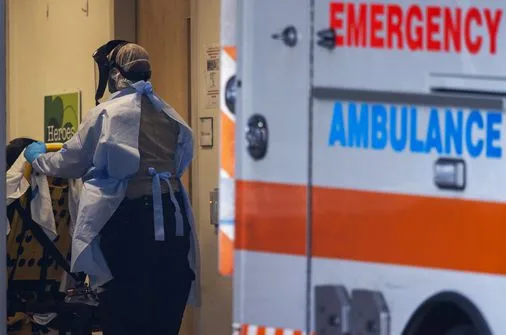
New state data shows that Black and Hispanic residents are using hospital services at higher rates than other groups, potentially pointing to uneven challenges accessing primary care and differences in the quality of care received at the hospital.
In a report issued Wednesday, the Center for Health Information and Analysis said while many Massachusetts residents struggle to access high quality, affordable, and timely health care, systemic inequities and institutional racism exacerbate these issues for many communities of color.
As a result, non-Hispanic Black patients account for 8.2 percent of inpatient discharges and 12.3 percent of emergency department visits, though they only account for 6.7 percent of the state’s population. Despite the pandemic, the racial and ethnic demographics of both inpatient discharges and emergency department visits remained relatively stable during the 12 months ending June 2019 through the 12 months ending June 2021.
Patients identifying as non-Hispanic Black also had the highest rate of returning to the hospital within 30 days of being discharged, at 17.8 percent, compared to other racial and ethnic groups. Statewide, the readmission rate was 16 percent.
Non-Hispanic Black patients also stayed in the hospital the longest, at 5.9 days on average, compared to 5.2 days on average statewide. Additionally, 39.6 percent of patients with emergency department visits that lasted longer than four hours identified as Black — higher than other racial and ethnic groups.
While Hispanic patients accounted for a lower share of inpatient visits, at 9.6 percent, they accounted for 16.8 percent of emergency department visits, though they make up only 12.4 percent of the state’s population.
“We know our health care system does not work equitably for all,” said Juan Fernando Lopera, chief diversity, equity, and inclusion officer at Beth Israel Lahey Health.
Fernando Lopera said the findings are in line with a recent Blue Cross Blue Shield of Massachusetts report, which found that health disparities have a $6 billion annual cost burden to the state. The idea that patients of color are admitted and readmitted at higher rates than their white counterparts showcases “the acute impacts of the social determinants of health on our communities,” he said.
Amy Rosenthal, executive director of advocacy organization Health Care For All, also said the results are not surprising, given what the organization hears daily on its consumer assistance help line.
“Black and Latinx residents are more likely to report challenges affording the routine preventive care they need to avoid more costly emergency and acute care later,” Rosenthal said in a statement. “Reducing or eliminating copays for treatments like insulin, asthma inhalers and heart medications would help keep residents healthy and out of the emergency room, and start to address these inequities.”
The center’s findings were taken from 12 months of data through June 2021, produced by using the Massachusetts Acute Hospital Case Mix Database, a database of patient encounters with acute care hospitals that captures a variety of statistics on inpatient admissions, emergency department visits, and outpatient observation stays in all acute care hospitals in the state.
However, more recent developments mean it is likely that access issues for communities of color will remain as data comes out for 2022 and 2023. Sue Joss, chief executive of the Brockton Neighborhood Health Center, said while some of the pressures of responding to COVID have lessened since June 2021, such as standing up testing and vaccination centers, community health centers are facing staffing issues that make it difficult to accommodate the demand for primary care.
In Brockton, which has the largest population of Black residents in the state, the monthslong closure of Brockton Hospital because of a fire, coupled with the unexpected closure of large physician group Compass Medical and an influx of migrants to the state has further exacerbated demands for primary care services.
“For the patients that we see, we are doing an impressive job of keeping them healthier and out of the hospital setting,” Joss said. “But in our case, we’re a good eight weeks out for new patients to get a new appointment. Even our own patients who are sick, we get them in as fast as we can, but our urgent slots fill up by 9 or 9:30 every morning. That’s a direct reflection of what’s happening in Brockton.”
Though the state has provided racial breakdowns of some hospital utilization in the past, the report is the first time CHIA has provided a comprehensive look at racial and ethnic differences in hospital utilizations across settings, and is the latest in a series of analyses CHIA is conducting on health equity in the state. At a baseline, executives hope the report will help set a foundation for future analysis, and start a conversation about the reasons behind the trends.
“Barriers to care in the appropriate setting adversely impacts patient outcomes and often results in increased downstream costs to the system,” said Lauren Peters, executive director of the Center for Health Information and Analysis, in a statement. “This report reveals key differences in hospital utilization across racial and ethnic groups that warrant further examination and policy intervention.”
Jessica Bartlett can be reached at jessica.bartlett@globe.com. Follow her @ByJessBartlett.


